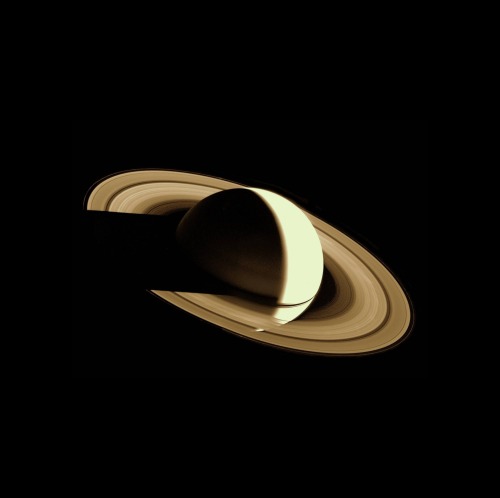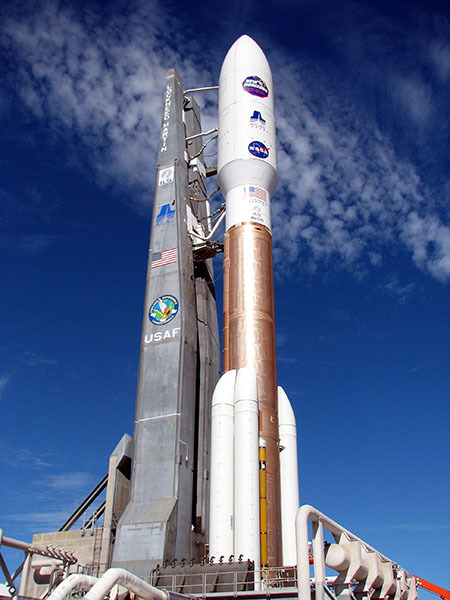Milky Way By Jonathon Wilcox


Milky Way by Jonathon Wilcox
More Posts from Ad-astra-affecte-spe and Others

The Milky Way and its red nebulae hanging over the Isaac Newton Telescope at La Palma // Jakob Sahner

Saturn observed by space probe Voyager 1 on November 16, 1980
Credit: NASA

November 12, 1980: Voyager 1 made its closest approach to Saturn, flying within 124,000 kilometers (77,000 miles) of the ringed planet.

NGC 1365, Heart of the Universe







New Horizons – Scientist of the Day
The New Horizons spacecraft, bound for Pluto, blasted off its launch pad aboard an Atlas V rocket on Jan. 19, 2006.
read more...

JWST Breaks New Ground - Twice
Between the orbit of Jupiter and Saturn lies a small 151Km wide asteroid/minor planet called Chariklo. This left over from our early solar system hasn't been imaged before, and was too small for JWST to image too, however, the JWST team were waiting for an opportunity to do some science.
Because of it's size, the only way they could do this was if a star passed directly behind the asteroid from the location of JWST, so it was put on a watch list, and in October, this is exactly what happened.
This is the first time any telescope has been able to see an object it wouldn't ordinarily be able to image, simply due to a chance occultation, so marks a first and interesting method for looking at some of these far off objects.

The asteroid happens also happens to sport a small ring of debris, and as the star didn't quite make a direct occultation, it did pass through the debris rings, being picked up twice as it passed through.

But what really was impressive was the second bit of data gathered, as the occultation occurred JWST was able to record the composition, detecting water ice.
Up until now, it had been assumed that the asteroid would have a significant water ice component, but this is the first time anybody has been able to take some real data from it.
Objects like Chariklo tell us so much about the early solar system, how Earth got it's water, and what other systems and exoplanets are likely made from.

L1527 IRS - Protostar
Stars form when bodies of dust and gas create enough mass to create a gravitational effect that's able to then pull in more gas, the process continues and the mass increases until the pressure at the centre is sufficient for fusion to begin.
There's many examples of protostars, in fact back in 2012, NASA’s Spitzer Space Telescope focused in on L1527 IRS, believed at the time to be the youngest forming star ever found.

Recently, the JWST re-visited this protostar, and the title image was the result.
The forming star cannot be visually spotted, but is thought to be around 20-40% the mass of our own Sun already.

If you look closely, you can see there's a dark patch in the centre, this is actually the accretion disk around the newly formed star, what is left over after the formation, may go on to form the planets, in fact, they may be actually starting to be created already, as recent evidence does point to planets being born around the same time as the star does in many cases.
The protostar is only 450 light years from Earth in the Constellation of Taurus, and is thought to be around 100,000 years old, a blink of an eye in the life of a star, particularly of this mass.

Sh2-136, Ghosts of the Cosmos
Hey. Why isn’t the moon landing a national holiday in the US. Isn’t that fucked up? Does anyone else think that’s absurd?

A Trailblazing Duo:
January 17, 2024 marks the 20th anniversary of Spirit and Opportunity's landing on Mars. The two of Mars Rovers, Spirit and Opportunity, landed on opposite sides of Mars and began exploring the planet. Since their landing, the rovers have sent more than 100,000 high-resolution, full-color images of the planet’s surface. Designed to last just 90 days, they exceeded expectations and changed the way we explore the Red Planet l more at NASA JPL

-
 mypopculturemoodblog reblogged this · 1 month ago
mypopculturemoodblog reblogged this · 1 month ago -
 iwannasinga reblogged this · 4 months ago
iwannasinga reblogged this · 4 months ago -
 murdockparkour reblogged this · 5 months ago
murdockparkour reblogged this · 5 months ago -
 cultivatingmypeace reblogged this · 5 months ago
cultivatingmypeace reblogged this · 5 months ago -
 demiaries reblogged this · 6 months ago
demiaries reblogged this · 6 months ago -
 tewz liked this · 6 months ago
tewz liked this · 6 months ago -
 maymelade reblogged this · 8 months ago
maymelade reblogged this · 8 months ago -
 chrrybloss reblogged this · 8 months ago
chrrybloss reblogged this · 8 months ago -
 eriecanary reblogged this · 8 months ago
eriecanary reblogged this · 8 months ago -
 crafteroftheforesthearth reblogged this · 9 months ago
crafteroftheforesthearth reblogged this · 9 months ago -
 reirasarchive reblogged this · 10 months ago
reirasarchive reblogged this · 10 months ago -
 sanityerodes reblogged this · 10 months ago
sanityerodes reblogged this · 10 months ago -
 myheartisblackandblue liked this · 10 months ago
myheartisblackandblue liked this · 10 months ago -
 alittlebitofsillinessreally liked this · 11 months ago
alittlebitofsillinessreally liked this · 11 months ago -
 johnnyslittleanimalblog liked this · 11 months ago
johnnyslittleanimalblog liked this · 11 months ago -
 steliosagapitos reblogged this · 11 months ago
steliosagapitos reblogged this · 11 months ago -
 steliosagapitos liked this · 11 months ago
steliosagapitos liked this · 11 months ago -
 isabella-ibis liked this · 11 months ago
isabella-ibis liked this · 11 months ago -
 le-piu-belle reblogged this · 11 months ago
le-piu-belle reblogged this · 11 months ago -
 le-piu-belle liked this · 11 months ago
le-piu-belle liked this · 11 months ago -
 alittlebitofsillinessreally reblogged this · 11 months ago
alittlebitofsillinessreally reblogged this · 11 months ago -
 szczekaczz reblogged this · 11 months ago
szczekaczz reblogged this · 11 months ago -
 v3rsi reblogged this · 11 months ago
v3rsi reblogged this · 11 months ago -
 hearthholmes reblogged this · 1 year ago
hearthholmes reblogged this · 1 year ago -
 lethilionn reblogged this · 1 year ago
lethilionn reblogged this · 1 year ago -
 awesome-natalia-me-blog reblogged this · 1 year ago
awesome-natalia-me-blog reblogged this · 1 year ago -
 awesome-natalia-me-blog liked this · 1 year ago
awesome-natalia-me-blog liked this · 1 year ago -
 jimalim reblogged this · 1 year ago
jimalim reblogged this · 1 year ago -
 bitchassdragonriddle liked this · 1 year ago
bitchassdragonriddle liked this · 1 year ago -
 jimalim liked this · 1 year ago
jimalim liked this · 1 year ago -
 sirgnomethegiant reblogged this · 1 year ago
sirgnomethegiant reblogged this · 1 year ago -
 enterprise-come-in reblogged this · 1 year ago
enterprise-come-in reblogged this · 1 year ago -
 wheresmybloodynauglamir liked this · 1 year ago
wheresmybloodynauglamir liked this · 1 year ago -
 ofmagpiesandtigers reblogged this · 1 year ago
ofmagpiesandtigers reblogged this · 1 year ago -
 ofmagpiesandtigers liked this · 1 year ago
ofmagpiesandtigers liked this · 1 year ago -
 criminal-logistics reblogged this · 1 year ago
criminal-logistics reblogged this · 1 year ago -
 dimondlite reblogged this · 1 year ago
dimondlite reblogged this · 1 year ago -
 v-m-smith reblogged this · 1 year ago
v-m-smith reblogged this · 1 year ago -
 koinwnika-ade3ia liked this · 1 year ago
koinwnika-ade3ia liked this · 1 year ago -
 xholeinmysoulx liked this · 1 year ago
xholeinmysoulx liked this · 1 year ago

★•Astronomy, Physics, and Aerospace•★ Original and Reblogged Content curated by a NASA Solar System Ambassador
204 posts